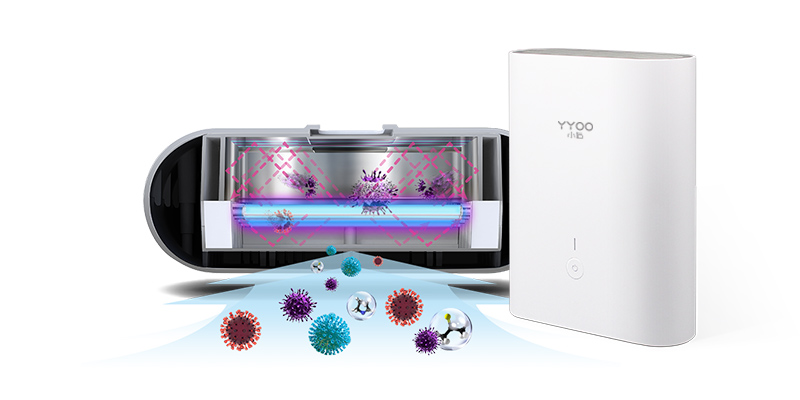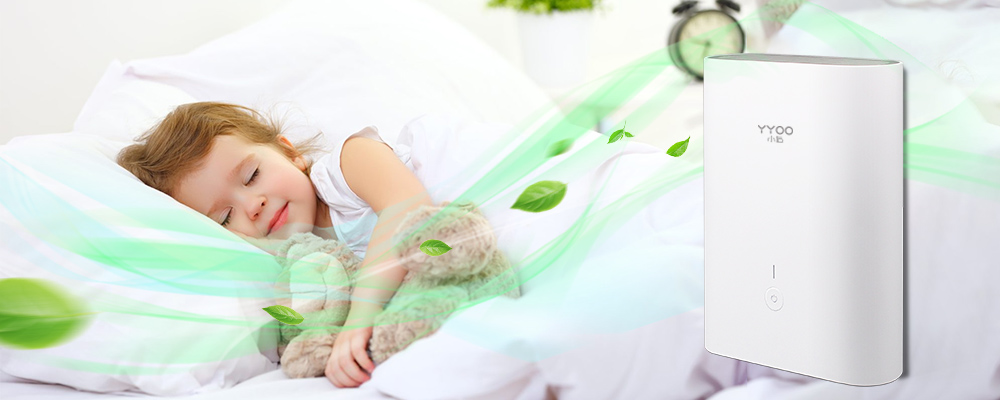Categories
New Blog
Terms You Should Know About Air Purifiers II
In this segment, we will continue introduce
more into air purifier terminology to aid your comprehension of the technical
terms found in air purifier articles and user guides.
CADR:
CADR stands for Clean Air Delivery Rate and is a standard used to measure the performance of air purifiers. CADR was proposed by the Association of Home Appliance Manufacturers (AHAM) in the United States, aiming to help consumers better understand and compare the efficiency of different brands and models of filter air purifiers such as bedroom HEPA air purifiers. CADR is divided into different categories based on the purifier's purification performance for different particles, such as Particle Mass (CADR-P), Particle Number (CADR-N), and Particle Volume (CADR-C). CADR (Clean Air Delivery Rate) is commonly used to evaluate the performance of air purifiers, especially in terms of particle removal efficiency. For air disinfectors, their first task is to kill or remove bacteria, viruses, and other microorganisms from the air, not just filter particles. Therefore, CADR may not be the best standard for evaluating air disinfectors' performance. When considering air disinfectors, you may focus on other indicators, such as sterilization efficiency, UV lamp power, air circulation rate, and specific microbial removal capabilities.
CFM (Cubic Feet per Minute):
CFM is the abbreviation for Cubic Feet per Minute, a unit used to measure air flow. In air treatment systems, CFM is used to describe the volume of air that air purifiers, air disinfectors, ventilation systems, or air conditioning systems process per minute.
Air Exchange Rate:
The air exchange rate refers to the number of times the air in an indoor environment is replaced by fresh air, typically measured in hours. It reflects the rate of air circulation and provides an indicator to assess indoor air quality. A higher air exchange rate usually means a more frequent introduction of fresh air into the indoor space, helping to remove pollutants, odors, and moisture, thereby improving indoor air quality.
Sterilization Rate:
The sterilization rate refers to the efficiency of air purification devices in removing or killing microorganisms such as bacteria and viruses in the air. This indicator reflects the antimicrobial performance of purification devices in improving air quality. The sterilization rate is usually expressed as a percentage, representing the proportion of microorganisms that the device can effectively remove or kill. For example, an UVC light air purifier with a sterilization rate of 99% means it can effectively remove 99% of bacteria or viruses in the air.

Micron:
In the field of air purifiers, "micron" (abbreviation for micrometer or micron, symbol: μm) is commonly used to describe the size of particles. A micron is a unit of length, equivalent to one millionth of a meter. In air purifiers, the size of particles is an important consideration because particles of different sizes have varying effects on human health and air quality.
PM10:
Particulate Matter with a diameter equal to or less than 10 micrometers, including larger dust particles, pollen, mould spores, etc. While PM10 can enter the respiratory system, most of it is intercepted by respiratory defense mechanisms such as nasal hair, nasal mucus, and coughing, resulting in relatively minimal harm to the human body.
PM2.5:
Particulate Matter with a diameter equal to or less than 2.5 micrometers. These particles are finer and can penetrate deeper into the respiratory system, posing greater risks to the cardiovascular and respiratory systems. PM2.5 primarily originates from industrial emissions, traffic exhaust, coal combustion, biomass burning, and other sources.
PM1.0:
Particulate Matter with a diameter equal to or less than 1.0 micrometer. This includes even smaller particles, often including some tiny bacteria and viruses.
Noise Level:
The noise level refers to the intensity or volume of the sound generated by air purifiers or other electrical devices during operation. It is typically measured in decibels (dB). The noise level is a standard for measuring the magnitude of the sound produced by devices during operation. For air purifiers, this is an important consideration, especially for the devices used in specific environments, such as bedroom air purifiers or baby nursery air purifiers.
Energy Efficiency Rating:
The energy efficiency rating measures the energy efficiency of a device or product during use. For household appliances and other energy-consuming devices, the energy efficiency rating is usually indicated by letters (such as A++, A+, A, B, C, etc.), where A++ represents the highest energy efficiency, decreasing in order, with C indicating relatively lower energy efficiency. In environments where air purifiers are often required to operate for extended periods, the energy efficiency rating is often related to whether energy expenses will be high. Therefore, this is also a significant indicator for many air purifier consumers.
Air purifier products have developed
rapidly in recent years and are highly valued health appliances. In this
article, we hope to help you better understand air purifiers, whether you are a
home consumer or a novice buyer in the industry.

Copyright © 2012-2026 Xiamen Atyou Health Technology Co., Ltd. All Rights Reserved.